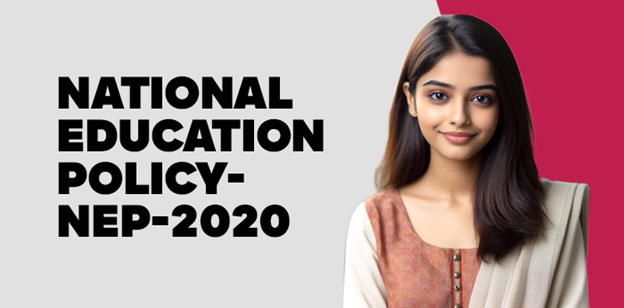
The National Education Policy (NEP) 2020, launched by the Indian government in July 2020, marks a significant shift in the country’s educational landscape. This comprehensive policy aims to overhaul the existing system, from preschool to higher education, with the goal of creating a more holistic, flexible, and equitable learning experience for all students.This article enlightens you on national education policy 2020 national policy on education 1986 and the first and second national policies on education in india.Let us now inderstand more of NEP 2020 in this context.
Join 100% Online Degree programs UGC Entitled and Affordable
The central aim of NEP 2020 is to transform India into a vibrant knowledge society by providing high-quality education to all. This policy envisions an education system rooted in Indian values that equips students with the necessary skills and knowledge to thrive in the 21st century. The NEP focuses on five key pillars: Access, Equity, Quality, Affordability, and Accountability. By addressing these areas, the policy aims to create a more inclusive and effective education system that caters to the diverse needs of learners.
|
Column1 |
Column2 |
|
Aspect |
Description |
|
Aim |
High-quality education for all |
|
School System |
5+3+3+4 structure (Foundational-Preparatory-Middle-Secondary) |
|
Student Benefits |
Holistic development, Flexibility, Strong foundations |
|
Applicability |
All education levels (UG, PG) |
|
UG & PG Changes |
Multidisciplinary degrees, Holistic learning, Flexible options |
|
Challenges |
Infrastructure, Teacher training, Equity, Assessment |
The table shows in a nutshell what exactly the NEP policy is .
Before going deep into what exactly NEP policy is .you need to understand these twon policies.
National Policy on Education 1986(NPE)
National Policy on Education 1986 was a landmark document in India’s educational history. It aimed to achieve universal access to elementary education (up to grade 8) and emphasized removing social disparities in education. The policy introduced initiatives like “Operation Blackboard” to improve school infrastructure and promoted equal educational opportunities for women and disadvantaged communities.
The first and second national policies on education in india are such that it paved the way for NEP 2020.Probing deep into the historical backdrop of these policies we cloud come across the first and second national policies on education in india. While the NPE of 1986 is often considered the first comprehensive policy, there were earlier attempts at national education reforms. The first national policy document can be traced back to the “Report of the Education Commission (1964-66),” also known as the Kothari Commission Report. This report laid the groundwork for a national education system with a focus on scientific temper, democracy, and socialism. The NPE of 1986 built upon the Kothari Commission’s recommendations, aiming to achieve the goals outlined in the earlier report.
The NEP proposes a new 5+3+3+4 school system, replacing the existing 10+2 structure. Here’s a breakdown of the new system:
As explained above, the 5-3-3-4 structure refers to the division of school education under NEP 2020. This system aims to provide a more holistic and developmentally appropriate learning experience for students across different age groups.
The National Education Policy (NPE) of 1986 was a comprehensive framework aimed at reforming and revitalizing India’s education system. It was a significant step towards achieving the goal of universalization of education, improvement in quality, and relevance of education to national development.
Aim
The primary aim of the NPE 1986 was to expand access to education while simultaneously improving its quality. The policy focused on creating a more equitable and inclusive education system that would cater to the diverse needs of the country. It sought to develop human resources capable of meeting the challenges of a rapidly changing society and contribute to national development.
Would you like to know more about the specific objectives or key features of the NPE 1986?
The NEP offers several potential benefits for students, including:
The NEP 2020 applies to all levels of education, including undergraduate (UG) and postgraduate (PG) courses.
Here’s a breakdown of the key features for UG and PG programs under NEP:
The Master’s program under NEP is envisioned to be a more flexible and research-oriented program. The policy proposes a multiple entry and exit system, allowing students to pursue various exit options like a diploma or certificate after completing specific course modules.
The NEP 2020 for degree students (UG and PG) aims to create a more dynamic and student-centric learning environment that fosters critical thinking,While the NEP 2020 presents a promising vision for Indian education, there are challenges that need to be addressed for successful implementation. Here are some key considerations:
The success of NEP 2020 hinges on collaborative efforts between the government, educational institutions, teachers, parents, and the community. Regular monitoring, course correction, and resource allocation will be essential to ensure the policy’s effective implementation and its transformative impact on Indian education.
The NEP 2020 proposes significant changes for both undergraduate (UG) and postgraduate (PG) programs:
The NEP 2020 envisions a more flexible and research-oriented master’s program:
For degree students (both UG and PG), NEP 2020 aims to create a more dynamic and student-centric learning environment. Key aspects include:
These changes aim to equip degree students with the necessary knowledge, skills, and values to succeed in a rapidly changing world.
The National Education Policy 2020 represents a bold and much-needed reform for the Indian education system. Its focus on holistic development, flexibility, and multidisciplinary learning has the potential to equip students with the skills and knowledge necessary to thrive in the 21st century. While challenges exist, a collaborative and well-planned implementation strategy can usher in a new era of quality education for all in India.
You May Like